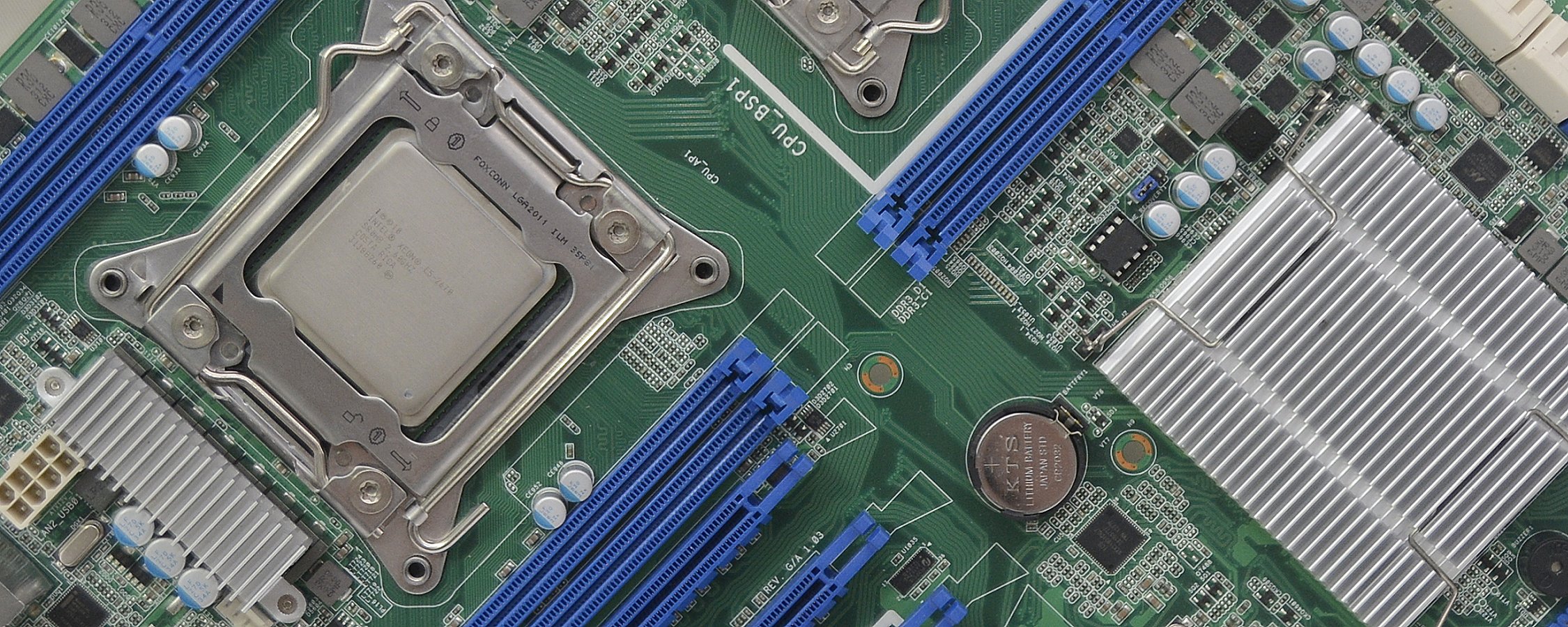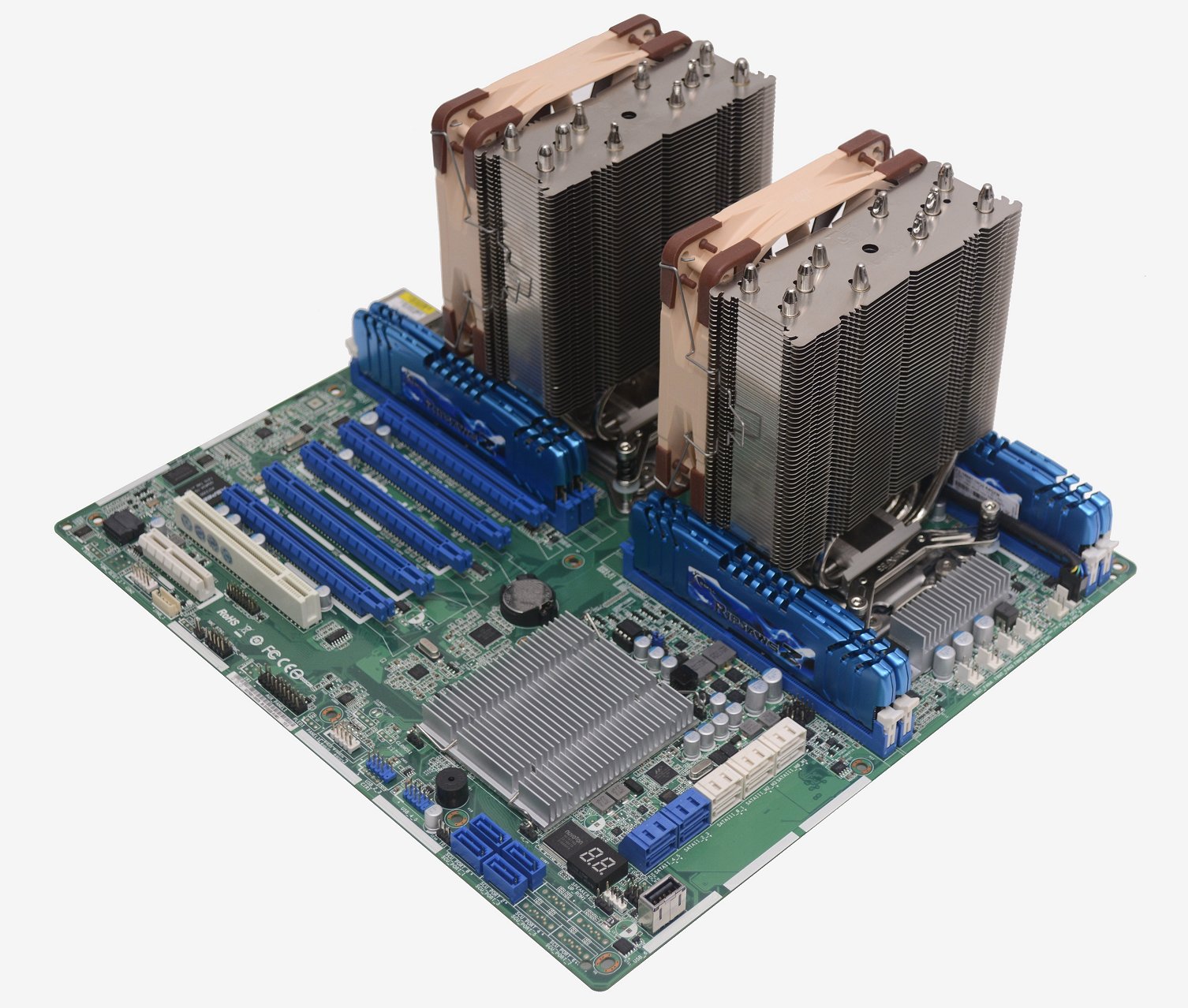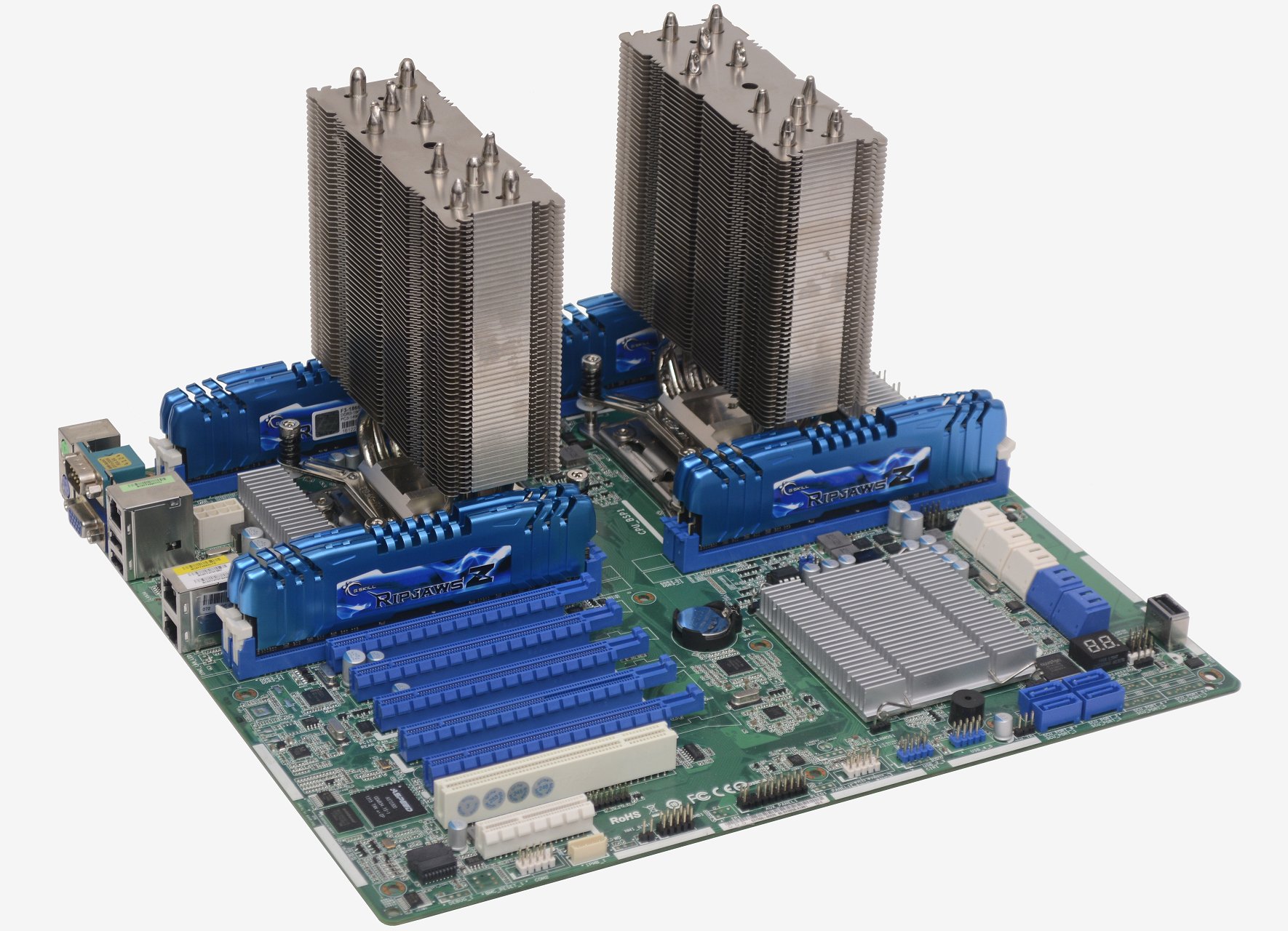It's been two years since Intel released their first octa-core desktop processor, the Haswell-E based Core i7-5960X, which until just recently was the most powerful consumer grade processor available. That title now belongs to the equally impressive but even more expensive 10-core Core i7-6950X. Out of the box, the 6950X is 20 to 30% faster than the Core i7-5960X in applications that can use those extra cores, however at $1650 it's also absurdly expensive.
Granted most would consider $1000+ an unreasonable amount of money to pay for a desktop processor – but for some, the price to pay for these isn't as important as the performance they deliver. Thanks to its 8-core design aided by Hyper-Threading, the 5960X is a multi-threading monster, and a popular choice for those doing a lot of video editing, particularly with 4K content.
But here's the thing. Before Intel graced us with the 8-core i7-5960X, there were server-grade 8-core Xeon processors on the market way back in 2010 in the form of the Xeon X6550, X7550 and X7560. The cheapest of these originally went on sale for ~$2500, while the flagship model cost a cool $3700. Clocked at just 2.27GHz, the X7560 was no longer impressive when the 5960X arrived. In addition, the X7560 was a 45nm Nehalem (read: hot!) based part.
As with desktop processors, Xeons saw a leap in efficiency and compute power with the arrival of Sandy Bridge, which used a 32nm design process. Even today, Sandy Bridge chips are able to hold their own against Skylake processors, with a full four-generation gap between them.
Note: This feature was originally published on 4/4/2016. We have revised it and bumped it as part of our #ThrowbackThursday initiative. Most notably, RAM prices have soared, the Xeons are just $20-40 more expensive than they were at their lowest point, and it's still a great bargain to build this Xeon machine if sheer multi-core processing power is what you need.
Desktop Sandy Bridge processors arrived in 2011, while the Xeon models came a year later. A huge range of octa-core "Sandy Bridge-EP" processors were released in 2012, the cheapest of which came at $1100 – even more expensive than the 5960X.
Four-plus years later, the Xeon E5-2670 is attracting a lot of interest in enthusiast circles. Originally priced at around $1550, the E5-2670 has eight cores clocked at 2.6GHz with a 3.3GHz turbo frequency and a whopping 20MB L3 cache.
Using the LGA2011 socket, the E5-2670 was intended for use with the C600 workstation series chipset. However, it is also compatible with X79 desktop motherboards. As such, the E5-2670 supports quad-channel DDR3 memory as its desktop cousins, the Core i7-3970X and 4960X. The 5960X, on the other hand, features support for more modern DDR4 memory, but that won't account for a significant performance advantage in most use cases.
Even faster (yet still affordable): 40-Thread Xeon PC for less than a Broadwell-E Core i7, read our follow-up here
So you're probably wondering at this point: why we are talking about a four-year-old hideously expensive server-grade processor? Last year these processors were selling for around $300. Not a bad deal for an 8-core Sandy Bridge processor with great L3 cache...
At their lowest point, the Xeon E5-2670 was selling for as little as $70. PC enthusiasts following the secondhand market were snapping them up in disbelief over the price.
Expecting this seemingly too-good-to-be-true deal to end shortly, not much has changed and as of writing the E5-2670 can be had for $90-100.
So how can it be that an 8-core Xeon has depreciated by 90+% in 4 years? The answer is simple: demand for these processors isn't huge (or at least it wasn't), but late last year, the supply became massive when thousands of processors hit the market as previous-gen servers from Facebook and other big Internet companies were decommissioned by used equipment recyclers. With so many processors in play, prices plummeted to the levels you see today.
Apart from the obvious specifications which we've already mentioned, another noteworthy feature of the Xeon E5-2670 is its ability to support symmetric multiprocessing. This means you can buy not just one Xeon for ~$100, but two for less than $200 and create an insanely affordable 16-core/32-thread beast.
As the cherry on top, the Asrock Rack EP2C602 server motherboard we picked up for putting this build together costs around the same amount as a high-end X99 motherboard, $300 brand new. So the two Xeons and the dual-socket motherboard came to a total of just $500, less than the asking price of a single hexa-core 6850K.
The Build
To make the most of the unbelievably cheap Xeon E5-2670 processor you are really going to want two on a Dual Socket R (LGA2011) solution. For our build, the Asrock Rack EP2C602 seemed like the best option, as it was the cheapest board we could get our hands on.
The board is well laid out, and is quite well equipped for what is essentially a base model using the Intel C602 chipset.
Apart from the standard two SATA 6Gb/s and eight SATA 3.0Gb/s ports offered by the Intel C602 chipset, Asrock Rack has included a Marvell SE9230 controller supporting an additional four SATA 6Gb/s ports, giving the EP2C602 a grand total of 14 SATA ports out of the box. These storage options make this an ideal motherboard for use in a storage box or SAN (Storage Area Network) server.
The EP2C602 also includes five PCIe x16 slots along with a single PCIe x4 slot as well as one legacy PCI slot - meaning there's no shortage of room for expansion cards.
Network support is handled by a pair of Intel 82574L Gigabit controllers which support teaming. There is a third network port found on the I/O panel which is connected to a Realtek RTL8211E controller supporting enterprise-friendly features like integrated IPMI 2.0 with KVM and dedicated management LAN.
Things to be aware of are the limits on DDR3 memory support. While we say limited, it can still handle up to 256GB of ECC memory or 64GB of UDIMM memory - however, the memory capacity is limited as the board only supports four DIMM slots per CPU rather than eight, as are found on more expensive boards such as the EP2C612D16C-4L. Still, if you don't require massive amounts (512GB+) of system memory, the EP2C602 should suffice.
Those hoping to use the EP2C602 as a workstation rather than as a traditional server will want to be aware of the limited peripheral connectivity options out of the box. As this is a server board, the rather basic I/O panel features two PS/2 ports, a COM port, VGA port (supported by ASPEED AST2300 graphics), just two USB 2.0 ports and three Gigabit Ethernet ports. An additional four USB 2.0 ports can be installed via on-board headers. Those seeking USB 3.0 support will have to resort to PCIe expansion cards, and the same goes for 10Gb/s networking.
The ECC memory this board can support is generally meant for servers, where any data corruption is unacceptable, such as making scientific calculations for instance. Since this isn't really a concern for most of our readers, we went with standard UDIMM modules from G.Skill, rather than equip the board with ECC memory.
The G.Skill F3-1866C10Q2-64GZM (8 x 8GB) memory kit costs $385 $285 (memory has gotten more expensive in the past few months) which equates to $48 per 8GB module. Each DDR3 module is designed to operate at 1866MHz and will provide each of our Xeon E5-2670 processors with quad-channel memory.
Keeping the two 115w Xeon processors nice and cool are a pair of Noctua NH-U12DX i4 coolers. Noctua's DX line of coolers have become a popular choice in high performance quiet cooling solutions for Intel Xeon CPUs. The latest i4 revision supports the LGA2011 platform (both Square ILM and Narrow ILM) and comes equipped with a 120mm NF-F12 'Focused Flow' fan.
Thanks to its slim design with only 45mm fin depth, the NH-U12DX i4 ensures easy access to the RAM slots. When installed parallel to the slots, it will not overhang the memory even with two fans installed. Still, for those concerned about space, the NH-D9DX i4 is an even more compact option. At a cost of $60 both the NH-U12DX i4 and NH-D9DX i4 are well priced and come backed by a 6-year manufacturer's warranty.
Finally powering the 16-core beast is the Corsair RM Series RM100x power supply. Priced at $170 there are cheaper options available but few better. Ideally consumers are going to want a power supply that can output around 600 watts so the RM100x is certainly overkill. That said it provides plenty of room for expansion.
Something to keep in mind is whichever power supply you choose, it needs to support a pair of EPS 8-pin power connectors. The lowest rated power supply in the Corsair RM Series to offer a pair of EPS power connectors is the RM850x.
A pair of GTX 980 Ti graphics cards will see the power figures rise well over 500 watts for example. The RM850x might be a smarter option as it is considerably cheaper at $120 and still supports a heap of devices.
The RM850x and RM1000x are fully modular power supplies sporting an 80 PLUS Gold certification and 100% Japanese capacitors. The RM1000x in conjunction with the Noctua fans made for an incredibly quiet dual Xeon server and most of the time the power supply was in "Zero RPM Fan Mode" which was nice.








